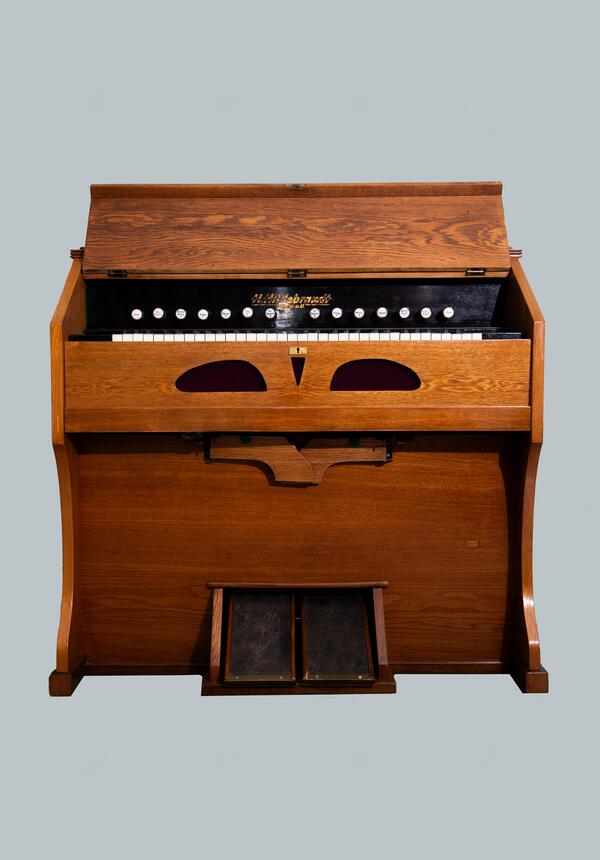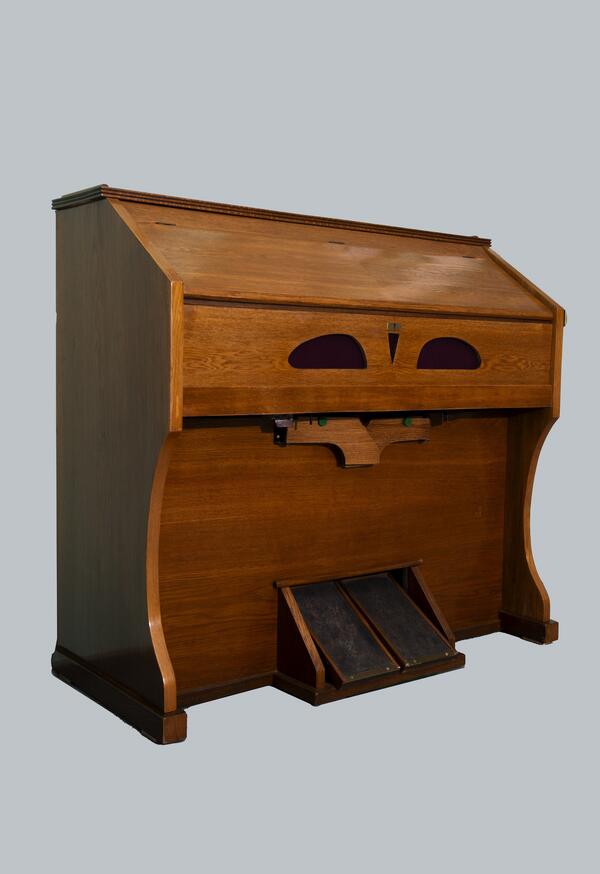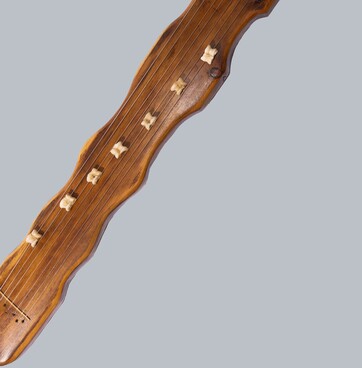The harmonium is often referred to as a “pump organ”. This free-reed keyboard instrument is equipped with pedals, which are necessary for running the bellows. Air is pumped, pushing the metal reeds which vibrate producing the sound.
This instrument has timbres similar to those of a pipe organ, and notes can be played for as long as the performer intends to. Therefore, a pianist can perform organ pieces using the harmonium.
Harmoniums were particularly popular in Siberia: due to the lack of organ makers, it was almost impossible to build pipe organs there. As soon as the Trans-Siberian Railway was established, pump organs could be easily delivered to Siberia. In this way, local Catholic and Protestant churches were equipped with the much-needed instruments.
In the early 20thcentury, the harmonium was also popular at secular concerts performed for a wide audience.
Not much is known about Max Bannicke’s firm. Presumably, it was founded in Leipzig in the early 1870s, specialized in manufacturing pianos until 1904, and earned a good reputation. Later Bannicke changed his line of business and began producing musical instruments of other companies under his trademark. Examples of firms that cooperated with him include Conrad, Martin & Törste, Max Leonhardt & Co., and Karl Stock. The company continued operating at least until 1940.
The displayed harmonium was manufactured in Leipzig in the first half of the 20thcentury. It has a traditional action mechanism. The instrument is equipped with two foot pedals and two knee levers. The keyboard (one manual, a range of F1–C3) has 14 stops and 61 keys: the tone keys are covered with white celluloid overlays, and the semitone keys are wooden, painted black.
In each case, the stops were chosen individually, taking into account the nature and content of the piece being performed.
The H. Hildebrandt Wiehe O.U.M. Bannicke harmonium belonged
to Archpriest Mikhail Skachkov who lived in Barnaul. Between 1970 and 2001,
Father Mikhail served in Barnaul’s Intercession Cathedral where he was the cantor
of the church choir.




